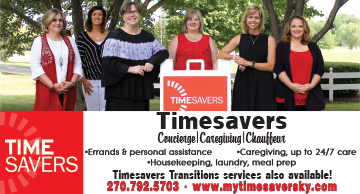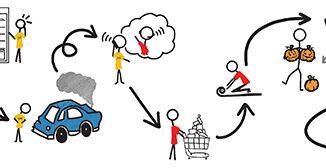Loneliness. You might think in a world as populated as ours it would be virtually impossible to be lonely. Unfortunately, loneliness is more common than we would like to believe. Here’s a little rundown of the stats:
- In a 2018 AARP survey, one in three people 45 and over said they were lonely. In this context, loneliness was defined in terms of whether someone felt they lacked connections and companionship.
- A similar survey in 2010 also showed one in three identified as lonely; however, the population in that 45 and over age group has grown significantly since 2010. Therefore, the number of lonely people is estimated to have increased by around 5,000,000.
- The sheer numbers of people are not the only disturbing fact. In a 2018 study conducted by the health insurer Cigna, the chief medical officer for behavioral health noted that loneliness has the same impact on mortality as smoking 15 cigarettes a day, making loneliness more dangerous to health than obesity.
- Caregivers are 8% more likely to be lonely than non-caregivers.
- About half of midlife and older adults who make less than $25,000 per year say they are lonely.
- Less than 20% of people identifying as lonely have spoken to a health care provider about their feelings and/or the impact it has on their overall health.
Is this an epidemic? Can we do anything to stem the tide? Let’s think it through, focusing specifically on older adults. As we age, we may begin to lose some of the roles we played earlier in our lives. We may retire and no longer be identified with a job or career. We may not feel quite as parent-ish as we did when our children were younger, leading to not feeling needed. We may lose our spouse or significant other and no longer have the role of life partner. If we lose our identifiers, do we disappear? Do we begin to believe there is no place for us?
As we age, we may become less mobile, sometimes no longer driving, or perhaps developing balance and joint or other health issues. It may become easier to stay at home, to begin to isolate ourselves, whether intentionally or subconsciously. This can be particularly true when someone has received a diagnosis of Alzheimer’s or another form of dementia. There is a tendency to withdraw from the activities and social interactions someone has always enjoyed. The withdrawal of the person with the illness may necessitate a similar withdrawal of their caregiver. Isolation and withdrawal from the world leads to depression and anxiety. Poor physical health can lead to depression and anxiety, then leading to isolation and withdrawal. It is the most vicious of cycles.
Clearly, the answer is in finding the way to keep people involved and engaged, feeling needed and appreciated at any age, but particularly with the older population. You might say there is no way to know when someone is lonely, when someone needs a hand to pull them out of the isolation. Maybe this is true, but in your church, in your bridge club, in your retired professional organization, in your neighborhood – if you pay attention you will notice when someone begins to drift out of and away from activities, meetings, attendance, and just plain old seeing and talking to other people.
It is incumbent upon each of us to notice, to actively listen to not only what people’s words are saying, but what their actions are saying. Let’s say a spry, active 80-year-old is widowed. It is understandable he might take some time to get comfortable with going back to a normal routine of church, service organizations, volunteer work, attending grandkids’ activities, etc. But let’s say after six months, the previously spry, active widower is noticeably more frail and begs off of invitations to play cards or go to dinner. Red flag, red flag, red flag! Decline in balance, weight loss, frequent respiratory issues – these can all be signs of poor nutrition and hydration, and/or signs of depression which can deter someone from eating regularly and from taking good preventive care of themselves.
Now is the time to reach out to our spry friend and perhaps offer to bring a meal once a week and share a conversation. Now is the time to make phone calls to check in and to offer to drive someone to church. Now is the time to learn someone’s story and allow them to learn yours. Now is the time! It is so easy to let people go, to allow them to disappear. It requires sustained intention to exert the effort to make someone feel needed and cared for on a regular basis.
Here’s a little challenge for you. Each month for the remainder of 2019, seek out one new person you can make a little less lonely. Maybe it’s your neighbor who never goes outside anymore. Maybe it’s the acquaintance you used to see at the grocery every week, but haven’t seen in a while. Maybe it’s the person who just moved to be closer to their adult children, but they don’t know a soul. Whomever you choose, make the effort. It doesn’t require a monetary investment, just a little time and willingness and empathy and determination. Sometimes those things are harder to come by than money, but I have faith in you. Now is the time.
-by Elizabeth Downing
About the Author: Elizabeth Downing is Director of Outreach for Timesavers Concierge, Caregiving & Chauffeur in Bowling Green, Kentucky. A 1982 graduate of WKU, Elizabeth found her passion in advocating and providing care for older adults and those with special needs. Timesavers seeks to raise awareness of issues relating to aging and caring for aging loved ones, and to let people know they are not alone in the journey, while working to provide the highest quality care available. Elizabeth has completed a Certificate in Care Management from Boston University, and facilitates a family caregiver support group each month.




